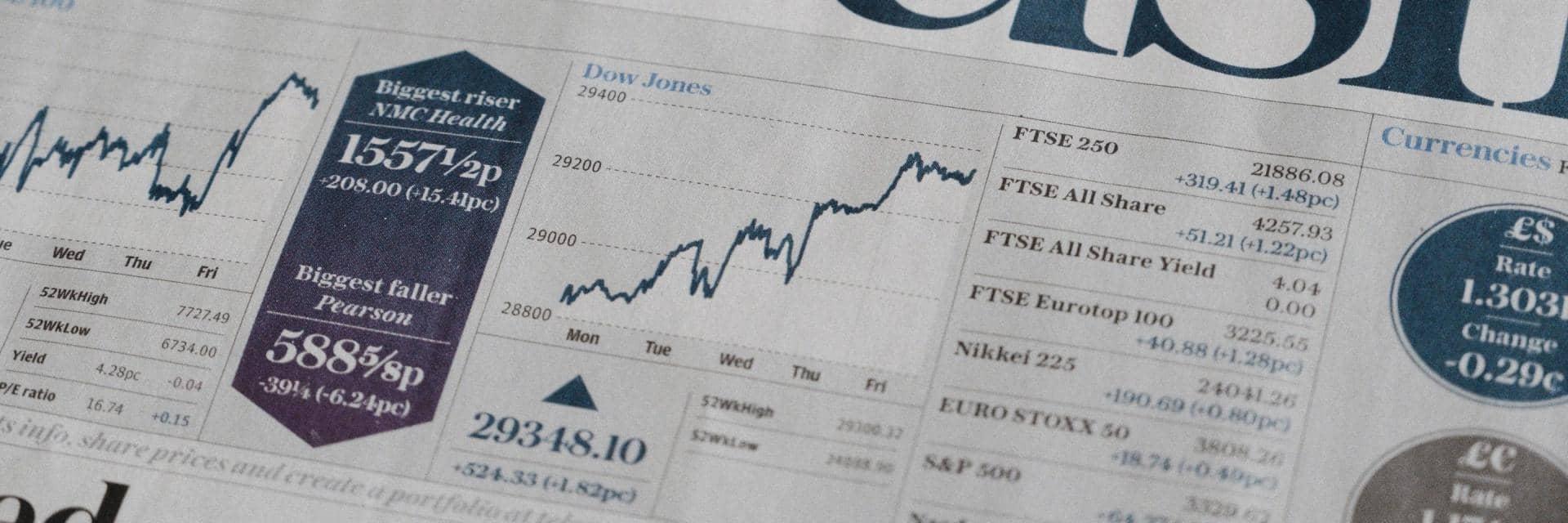
The great inflation debate
While inflation risks may at least two years’ away, the market seems be underpricing the risk. There may be value in hedging inflation risks with real assets exposure.

24 July 2020
4 minute read
Undoubtedly the focus of the week will be on the Federal Reserve (Fed) meeting on 29 July. The US Fed has cut rates in two interims meetings first beginning of March by 50bp to 1.25% followed by another 100bp cut mid-March bringing down the target range to 0.00-0.25%. The meeting is likely to preserve the status quo of providing unprecedented liquidity to markets, but no new measures.
While financial markets look for continuing signs of economic recovery, advance second-quarter gross domestic product (GDP) data from US and the eurozone will likely show the true impact of lockdown measures on output.
Chancellor Rishi Sunak’s summer statement included a temporary increase in the stamp duty tax threshold for property purchases. Given house price growth in the UK has struggled leading up to this announcement, July Nationwide house price data should help gauge the initial impact the policy response is having.
In the eurozone, the July flash year on year (y/y) harmonised index of consumer prices is also due out on Friday. The euro area inflation rate was 0.3% in June, up from 0.1% in May – indicating as expected subdued inflation.
US jobless claims data have continued to moderate from their record highs, they still remain elevated and we are a long way from recovering the 20m jobs lost in April. With COVID-19 cases surging in the US and states such as California reversing their reopening, Thursday’s US initial jobless numbers will continue to matter in determining the health of the economy.
Fiscal profiles are set to worsen, in the wake of COVID-19, across the developed world. The deterioration is likely to be uneven across economies and will probably be dependent on the size of stimulus packages, underlying fiscal dynamics and growth trajectories.
With most countries expected to extend their fiscal stimulus to help the recovery, the exact fiscal deficit for 2020 looks on the way to being historically large. Globally, fiscal support is estimated to be about $11 trillion so far, half in direct fiscal measures and the remainder in liquidity support.
The debt-to-gross domestic product ratio for advanced, G20, countries is set to rise beyond world war two levels in the coming year. Indeed, there is a risk this might deteriorate if additional fiscal stimulus occurs. Policymakers will not be able to ignore worsening public budget profiles for long.
Rising debt loads can potentially become a drag on growth by crowding out private investments in normal times or by reducing policy flexibility in future downturns. With central banks already at the lower bound of interest rates and with their balance sheets at record levels, the need for governments to control debt levels to address more downturns could become a priority.
Lower budget deficit, stronger economic growth, higher inflation or additional financial repression – measures which lead private money to finance government debt at artificially low rates – are all options to reduce the debt burden. It is likely that a combination of those factors, with different countries privileging one option over the others, will be needed.
While inflation risks may at least two years’ away, the market seems be underpricing the risk. There may be value in hedging inflation risks with real assets exposure.
This communication:
Any past or simulated past performance including back-testing, modelling or scenario analysis, or future projections contained in this communication is no indication as to future performance. No representation is made as to the accuracy of the assumptions made in this communication, or completeness of, any modelling, scenario analysis or back-testing. The value of any investment may also fluctuate as a result of market changes.
Barclays is a full service bank. In the normal course of offering products and services, Barclays may act in several capacities and simultaneously, giving rise to potential conflicts of interest which may impact the performance of the products.
Where information in this communication has been obtained from third party sources, we believe those sources to be reliable but we do not guarantee the information’s accuracy and you should note that it may be incomplete or condensed.
Neither Barclays nor any of its directors, officers, employees, representatives or agents, accepts any liability whatsoever for any direct, indirect or consequential losses (in contract, tort or otherwise) arising from the use of this communication or its contents or reliance on the information contained herein, except to the extent this would be prohibited by law or regulation. Law or regulation in certain countries may restrict the manner of distribution of this communication and the availability of the products and services, and persons who come into possession of this publication are required to inform themselves of and observe such restrictions.
You have sole responsibility for the management of your tax and legal affairs including making any applicable filings and payments and complying with any applicable laws and regulations. We have not and will not provide you with tax or legal advice and recommend that you obtain independent tax and legal advice tailored to your individual circumstances.
THIS COMMUNICATION IS PROVIDED FOR INFORMATION PURPOSES ONLY AND IS SUBJECT TO CHANGE. IT IS INDICATIVE ONLY AND IS NOT BINDING.
